What are the problems that GDIF solves for its clients?
GDIF is a smart technology platform powering global trade investments from end-to-end. Trade finance is arguably the oldest banking product, although also the only one that is not easily accessible for institutional investors. We have the technology to make trade finance investable.
For those unfamiliar with trade finance, it may not be immediately obvious why institutional investors should consider putting funds into this asset class, nor indeed why those lending to companies trading goods globally do not simply retain the instruments on their books. Yet, the trend has been growing – trade finance assets are becoming more widely available and more attractive to institutional investors. And, while the practice was triggered by the combined pressures of market and regulatory forces, it is the more recent application of technology that has made trade finance one of the lowest-risk and easiest-to-manage investment opportunities in the institutional market. It is also eminently scalable.
The application of technology is particularly beneficial for small and medium-sized enterprises (SMEs), especially those in emerging markets, whose profile is often considered too risky. Going forward, SME credit scores will become increasingly accurate, reducing default levels. Such increased visibility should help to alleviate the “trade finance gap” – the difference between the demand and supply of trade finance – which currently stands at US$1.5 trillion, according to the Asian Development Bank, and is a major drag on global economic growth.
What are the key technologies that underpin your marketplace?
Our AI-driven credit model combines behavioural and other information about companies and enriches this data with geographical and socio-economic information. We recognize data depth and breadth by carefully handling any missing entries. This means that if a company is missing a certain accounting entry, we are not excluding it from the training and test sets, but instead note the absence of data and even learn from this pattern of absences.
A combination of machine learning techniques with deep and broad data coverage allows the outperformance of traditional Z-score and other traditional models.
Applying machine learning specifically to trade finance data yields a lot of valuable insights, for example allowing the identification of features not visible in simple cross-sectional analysis, such as irregularities in repayment patterns relative to other customers of a given supplier, or changes in trade payments relative to other similar companies from the same industry or region. And it is this application of AI to broader and deeper data that allows a far greater number of SMEs to be captured and credit-scored.
Additionally, our securitisation as a service offering reduces complexity and makes trade finance investments efficient, liquid and transparent.
Do you have any rival products in the market and what makes you unique?
We specialize in the distribution of trade finance from originators (mostly banks) to institutional investors. As such, we act as a partner to banks. In this part of the value chain, there are currently only a very few other active platforms – making us one of the first and most experienced providers in the industry.
Unlike our competitors, we are not trying to disintermediate the banks. Instead, we leverage their access to corporate networks to assist with labour-intensive processes such as on-boarding, collection and work-out services. We are alone in providing a cloud-based portal that grants access to trade finance assets. And due to our exclusive focus on this area, there is no conflict of interest with the banks themselves.
Recently, the term GDIF has been coined. It describes the group of technology companies providing trade related services including trade finance technology. Of the latter, only a very few companies focus on the distribution of trade finance from banks to institutional funders.
How has GDIF developed over the last year?
We have passed several hundred million dollars’ worth of trade finance instruments through the platform, involving market participants in Europe, Asia and Africa. We currently have over 40 active platform members, with funders ranging from regulated insurance companies to private banks. Over recent months, we’ve completed several credit analytics proofs of concept (POCs).
Moreover, and despite our only recent inception, we are already engaged – at POC or data integration phase – with many of the leading global trade finance banks. Looking to 2019, we can expect to see large institutional investors coming online as investors of bank distributed trade finance instruments.
What are your thoughts on the trade finance market in the Americas, Asia, and more generally, continental Europe? How can GDIF help to meet demand and concerns?
Europe has some of the world’s leading trade finance banks. They have led the way with respect to both appetite for emerging market risk and innovation. They are important components in our Marketplace as are some of the large institutional investors.
Some banks took advantage of the churn in trade finance leadership since the crisis of 2008 to establish themselves more prominently in the business and win trade finance clients in their home markets and abroad. Reflecting companies’ need for replacement providers and the availability of new options among both banks and nonbanks, the average number of trade finance providers used by companies across Europe is on the rise.
Yet, despite this still-shifting environment, BNP Paribas maintains the position of clear-cut leader. Some 36% percent of large European companies use BNP Paribas for trade finance, outpacing other dominant European players.

